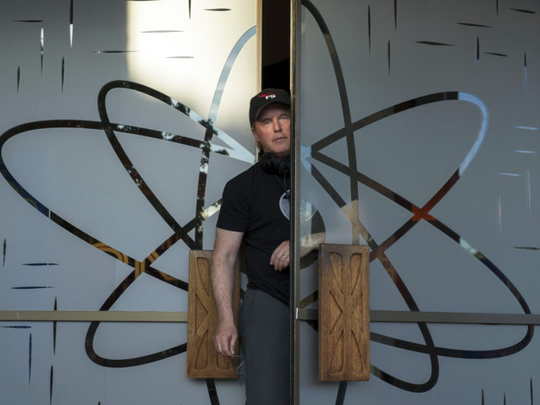
At the beginning of Tomorrowland — the new futurist extravaganza from Brad Bird and the only film in the known universe to feature a bathtub that becomes a rocket ship — a young boy travels to the 1964 World’s Fair in New York. He has ginned up a jet pack in his garage and, despite its bugs, is eager to show it off at a contest.
When the stern-lipped man running the event tells him there’s no point to trying it if it doesn’t work, the boy replies, “Can’t it just be fun?”
The line sets up the character’s philosophy, but it also could double as a directorial mission statement. Bird, director of the animated hits Ratatouille and The Incredibles, has built a career on that principle. Though he didn’t direct his first feature (The Iron Giant) until he was on the other side of 40, Bird, now 57, has adopted a kind of jet pack approach to filmmaking, assembling complex, forward-thinking machinery and sending it gleefully aloft.
After stepping into the rebuilt-vehicle tradition four years ago with Mission: Impossible — Ghost Protocol, his live-action debut, Bird has now directed his follow-up — starring George Clooney, conceived and co-written by Lost veteran Damon Lindelof and featuring a load of actual and ideological doodads.
Perhaps most surprising, it is a movie made by (and about) a mega-conglomerate that also tries for something independent-minded, digressive, even weird.
The movie’s main preoccupation is much the same as Bird’s real-life one: dystopia, and why we’re in such a hurry to get there, via either our movies or a cultural resignation.
“When Damon and I were first talking about the project, we were wondering why people’s once-bright notions about the future gradually seemed to disappear,” Bird said.
“When [Damon and I] were little, people had a very positive idea about the future, even though there were bad things going on in the world,” Bird said. “Even the 1964 World’s Fair happened during the Cold War. But there was a sense we could overcome them. And yet now we act like we’re passengers on a bus with no say in where it’s going, with no realization that we collectively write the future every day and can make it so much better than it otherwise would be.”
In Bird, moviedom has a director willful enough to get a nearly $200-million (Dh734 million) original movie made, then pack it both with ideas and a deep sense of optimism — a feat that will seem Walt Disney-esque to his fans and Jiminy Cricket crazy to his sceptics.
Aim-high spirit
When Bird was a child, the story goes, he took a tour of Disney with his parents and declared he’d one day be an animator at the company. A few years later he made a homespun animated film. He wasn’t sure what to do with it, but his parents encouraged him to send it to legendary Disney animator Milt Kahl. Kahl wound up mentoring him.
The story sounds apocryphal — the kind of colourful origin bit one might find in, well, a Brad Bird movie — but the director confirms its authenticity. The tale hints at Bird’s aim-high spirit, which has followed him into his directing career and made him a perfectionist in a business built on trade-offs.
“I have a cynical side, no question,” Bird said. “But ultimately I believe the best part of ourselves will rise to the occasion. I think of Cary Grant, who growing up was named Archie Leach and had this strong Cockney accent. But he basically invented Cary Grant and worked at it, and pretty soon by choosing to be Cary Grant he became him.
“And I don’t know,” he said, adding in a flourish that wouldn’t be out of place on the Silicon Valley campuses near his home, “why people don’t think the same about the world”.













